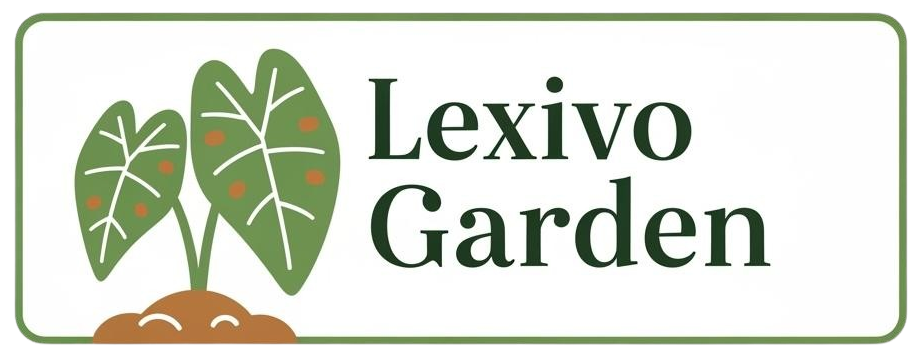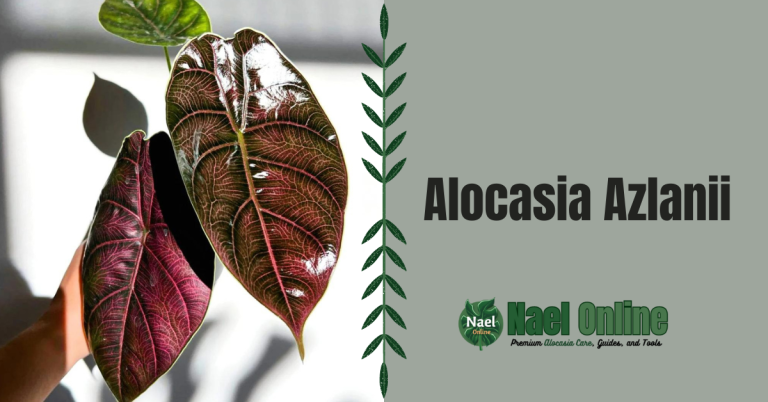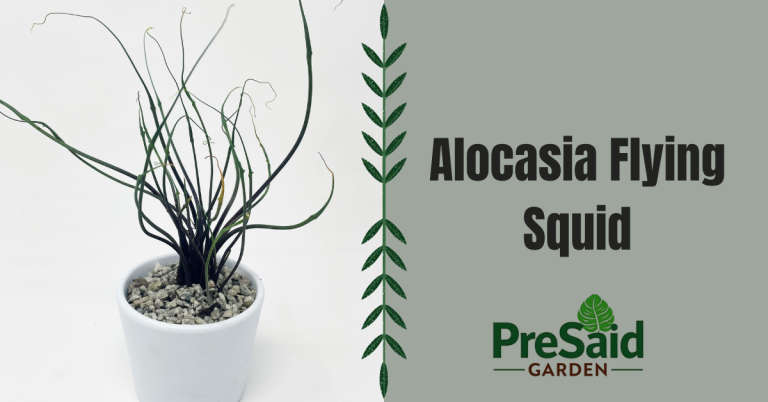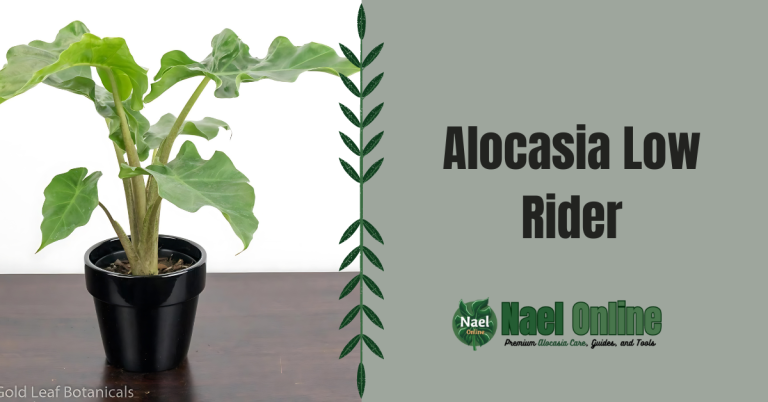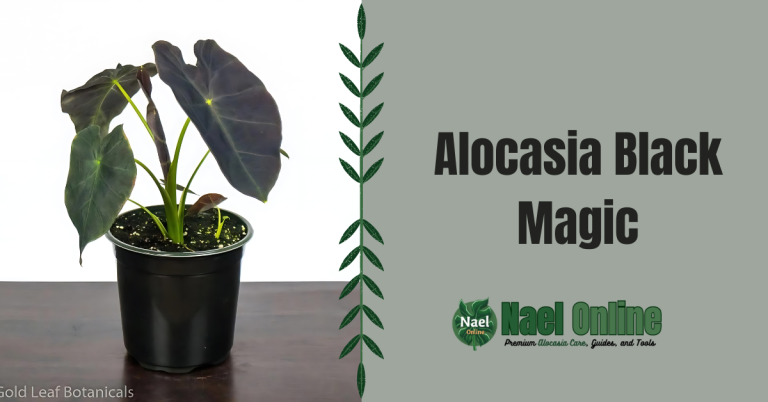Alocasia Emerald Isle: Care Guide & Growing Tips for Lush Foliage

Hey there, fellow plant enthusiasts! Lucas William here from Lexivo Garden. Today, I’m excited to share my decade-long experience with one of the most stunning houseplants I’ve ever grown – the Alocasia Emerald Isle. If you’re looking to add a touch of tropical elegance to your home, you’re in for a treat. Let’s dive into the lush world of this gorgeous Alocasia variety!
What’s So Special About Alocasia Emerald Isle?
The Alocasia Emerald Isle is a showstopper, plain and simple. With its vibrant green leaves and unique texture, it’s no wonder this plant has become a favorite among indoor gardeners. But there’s more to this beauty than meets the eye. Let me break it down for you:
The Basics: Alocasia Emerald Isle Plant Overview
First things first, let’s get to know our green friend a little better:
- Scientific Name: Alocasia ‘Emerald Isle’
- Common Names: Emerald Isle Alocasia, Jewel Alocasia
- Family: Araceae
- Origin: Hybrid cultivar, parent species native to Southeast Asia
A Plant with Benefits
Growing Alocasia Emerald Isle isn’t just about looks. Here’s why you’ll love having it around:
- Air Purification: These leafy beauties are natural air cleaners.
- Mood Booster: Their lush green color can lift your spirits on gloomy days.
- Conversation Starter: Trust me, visitors won’t be able to stop asking about it!
Appearance That Wows
Let me paint you a picture of what makes the Alocasia Emerald Isle stand out:
Unique Features
- Leaf Shape: Heart-shaped leaves with wavy edges
- Color: Deep, emerald green with lighter veining
- Texture: Glossy and slightly textured surface
- Size: Compact grower, perfect for indoor spaces
Growth Habit
- Height: Typically reaches 2-3 feet indoors
- Spread: Can spread 1-2 feet wide
- Growth Rate: Moderate to fast during growing season
Caring for Your Alocasia Emerald Isle: A Personal Guide

Now, let’s get down to the nitty-gritty of keeping your Alocasia Emerald Isle happy and healthy. I’ve compiled this care guide based on years of trial and error (yes, I’ve made mistakes so you don’t have to!).
Care Guide at a Glance
| Aspect | Requirement |
|---|---|
| Light | Bright, indirect light |
| Water | Keep soil consistently moist, not soggy |
| Temperature | 65-80°F (18-27°C) |
| Humidity | High, 60% or more |
| Soil | Well-draining, rich potting mix |
| Fertilizer | Balanced, liquid fertilizer monthly during growing season |
| Pruning | Remove yellowing or damaged leaves as needed |
| Repotting | Every 1-2 years or when rootbound |
Detailed Care Instructions
1. Lighting: The Key to Vibrant Leaves
Alocasia Emerald Isle thrives in bright, indirect light. I’ve found the perfect spot in my east-facing window where it gets morning sun and filtered light throughout the day. Too much direct sun can scorch those beautiful leaves, while too little light leads to leggy growth.
2. Watering: Finding the Sweet Spot
These plants love moisture but hate waterlogged soil. I water mine when the top inch of soil feels dry. In summer, that’s about twice a week, while in winter, I cut back to once a week or less. Remember, it’s better to underwater than overwater!
3. Humidity: Embrace the Tropical Vibes
Coming from humid Southeast Asian jungles, Alocasia Emerald Isle craves moisture in the air. I keep a humidifier nearby and mist the leaves regularly. Grouping it with other plants or placing it on a pebble tray also works wonders.
4. Soil and Fertilizer: Nutrients for Growth
A well-draining, rich potting mix is crucial. I use a blend of regular potting soil, perlite, and orchid bark. During the growing season (spring and summer), I feed my Alocasia with a balanced liquid fertilizer once a month. Trust me, it’ll reward you with lush growth!
5. Temperature: Keep It Cozy
These tropical beauties prefer temperatures between 65-80°F (18-27°C). I make sure to keep mine away from cold drafts and sudden temperature changes. If you live in a colder climate like I do here in Oregon, be extra careful in winter!
Propagation: Spreading the Alocasia Love
Ready to expand your Alocasia Emerald Isle family? Here’s how I do it:
- Division: During repotting, gently separate the rhizomes with roots attached.
- Stem Cuttings: Cut a healthy stem with at least one leaf and node, then root in water or moist soil.
- Rhizome Cuttings: Cut a piece of rhizome with growth buds and plant in moist soil.
I’ve had great success with division – it’s like getting a free plant every time you repot!
Pruning and Repotting: Keeping Your Plant in Shape
Pruning
Remove any yellowing or damaged leaves at the base of the stem. This not only keeps your plant looking tidy but also encourages new growth. I usually do this in spring before the growing season kicks off.
Repotting
I repot my Alocasia Emerald Isle every 1-2 years or when I notice roots peeking out of the drainage holes. Choose a pot that’s 1-2 inches larger in diameter and use fresh potting mix. Spring is the best time for this task.
Watch Out: Pests and Problems
Even with the best care, issues can pop up. Here are some I’ve encountered:
- Spider Mites: Keep an eye out for fine webbing on leaves. I treat with neem oil or insecticidal soap.
- Root Rot: Overwatering is the culprit. If caught early, reduce watering and repot in fresh, dry soil.
- Leaf Yellowing: Often due to overwatering or low light. Adjust your care routine accordingly.
Alocasia Emerald Isle vs. Other Alocasias
While I love all Alocasias, the Emerald Isle holds a special place in my heart. Compared to its cousins:
- It’s more compact than Alocasia Polly or Alocasia Amazonica
- Its leaves are darker and more textured than Alocasia Frydek
- It’s generally easier to care for than the finicky Alocasia Black Velvet
Where to Get Your Alocasia Emerald Isle
Ready to add this beauty to your collection? You’re in luck! At Lexivo Garden, we often have Alocasia Emerald Isle available in our shop. Check out our selection at https://lexivo.com.ng/shop/. Prices typically range from $30 to $60, depending on the plant’s size.
Frequently Asked Questions
- Is Alocasia Emerald Isle toxic to pets?
Yes, like other Alocasias, it contains calcium oxalate crystals which can be harmful if ingested. Keep it away from curious pets and children. - Why are my Alocasia Emerald Isle’s leaves drooping?
Drooping leaves often indicate underwatering or low humidity. Check the soil moisture and increase humidity if needed. - How often should I clean the leaves of my Alocasia Emerald Isle?
I wipe the leaves gently with a damp cloth every 2-3 weeks to keep them dust-free and looking their best. - Can Alocasia Emerald Isle survive outdoors?
In USDA zones 10-11, it can live outdoors year-round. In cooler areas like Oregon, it’s best kept as an indoor plant. - Why is my Alocasia Emerald Isle not producing new leaves?
This could be due to insufficient light, nutrients, or it might be entering a dormant phase. Ensure it’s getting enough light and fertilizer during the growing season.
There you have it, folks – everything I’ve learned about growing and loving Alocasia Emerald Isle over the past decade. Remember, every plant is unique, so don’t be afraid to experiment and find what works best in your home. And if you need any supplies for your new green friend, don’t forget to check out our range of plant care products at https://lexivo.com.ng/shop/.
Happy planting, and may your Alocasia Emerald Isle thrive as beautifully as mine has!
